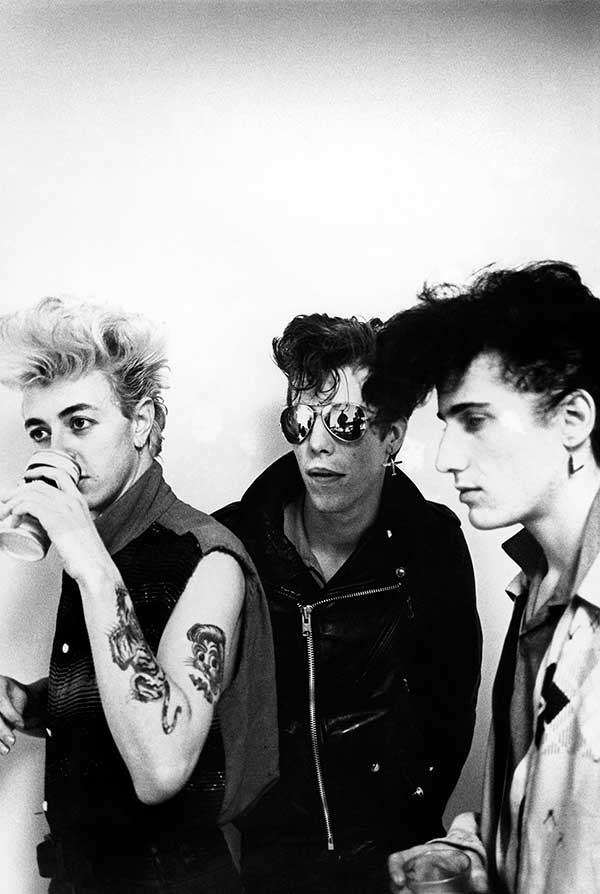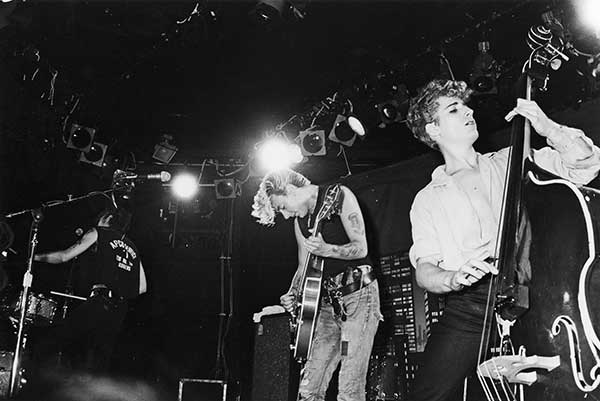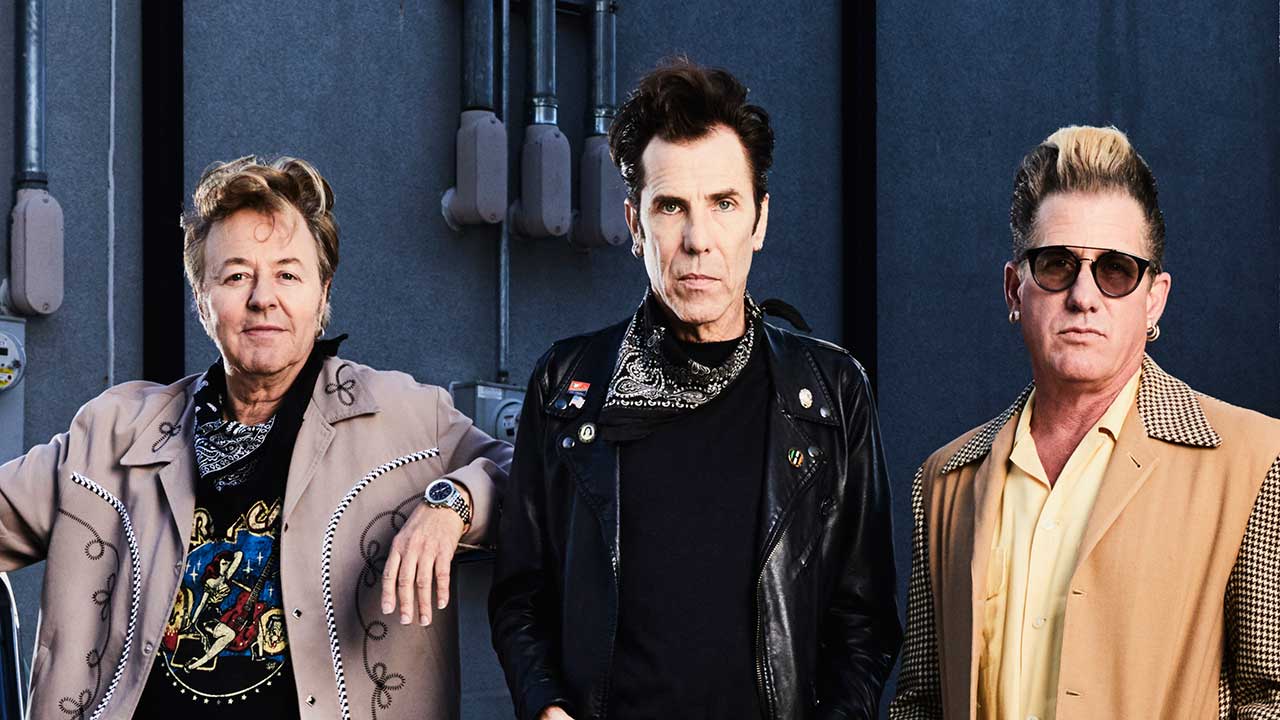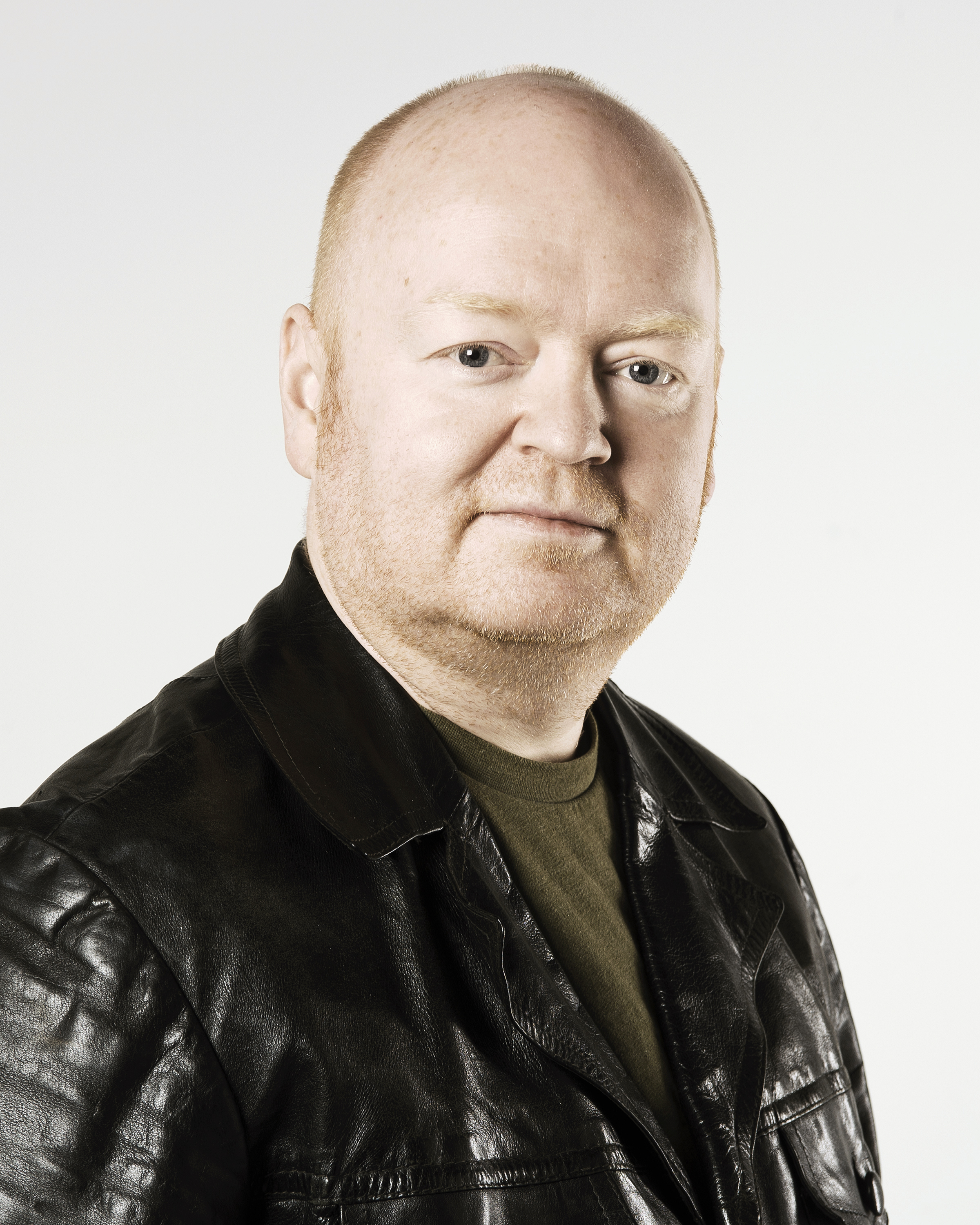It’s February 19, 1981. Early Thursday evening. You’ve just had your tea, and are now slumped in front of the TV to catch Top Of The Pops. This, by the way, is the now infamous week that Australian Joe Dolce and his mock Italian single Shaddup You Face deny Ultravox’s Vienna the No.1 spot, and a pop-quiz staple was born.
Also on the show that week were Rainbow’s promo video for I Surrender (No.4), Motörhead and Girlschool with the old Johnny Kidd & The Pirates shanty Please Don’t Touch (No.15), and Toyah with her fingernails-down-a-blackboard screech It’s A Mystery (No.42).
Next up, the camera pans around to three feral-looking louts called the Stray Cats. Guitar picker and frontman Brian Setzer, bassist Lee Rocker, and drummer Slim Jim Phantom are just kids. They wear heavy make-up and, frankly, look like they could do with a good meal. The song they play on the show is their second single, rockabilly masterpiece Rock This Town.
To a British audience more accustomed to the end-of-the-pier rock’n’roll pastiche of Showaddywaddy, Mud and the like, the Stray Cats look genuinely menacing. Lest we forget, pop tribalism is at its peak in the early 80s. Skins. Mods. New Romantics. Each to their own. In the case of the rockers, birds of a feather – or more accurately, leather – gather together.
“Me and Lemmy were drinking whisky at the BBC bar afterwards,” Brian Setzer recalls. “The crazy rockabilly dude… and Lemmy. The New Romantics were in the other corner. Probably having a wine cooler.”
February ’81 wasn’t the first time the Stray Cats appeared on Top Of The Pops. They made their debut in November the year before, thanks to charting with their first Arista label single, Runaway Boys.
Tommy Vance is the presenter that night. He’s wearing shades, natch, and a terrible jumper. He introduces the Cats as “one of the hottest properties in the record business at the moment…”
These kids look the absolute balls, the epitome of street punks. The kind of boys that nice girls don’t take home to meet mum and dad. What Tommy and the viewers, not to mention the kids dancing awkwardly to Runaway Boys in the TOTP studio, can’t have known is just how autobiographical the song is.
Now, almost four decades on, with a triumphant reunion album to show off, Setzer, Rocker and Phantom take us back to their early days in London. Back when they were the runaway boys. Desperate, poor, often homeless, yet having an absolute ball.
Recorded in Nashville, their new album, 40, marks the anniversary of the Cats’ birth in Massapequa, New York back in 1979. The following year they made a decision that would seal their fate.
“The first feeling for me when we got off the plane in London was the old movies we had seen,” says Setzer. “I remember wandering about Soho thinking it was like an old cloak-and-dagger movie – all the smoky alleys. I kept thinking Jack The Ripper could be up there.”
“When we got to England we really did not have a plan,” says Rocker. “We were playing around New York City – CBGB and Max’s Kansas City, and some corner bar places. We’d heard about London, that there was a cool scene there, and that summer we said let’s go to England.”
In hindsight, it was a brave move for a bunch of kids, even if they were used to life in New York City.
“I think it was a combination of balls and stupidity,” Setzer says, laughing. “I wouldn’t give myself that much credit! Actually, ‘stupidity’ is a bit strong. ‘Naivety’ is a nicer way of putting it.”
“Time has a way… well, you forget a lot of stuff,” says Rocker, picking up the story. “When we first got there I definitely remember not knowing how to use a pay phone, so I couldn’t call anyone back home. And I remember dragging the upright bass around, running out of money quickly, and knocking on doors to try to get a show and get us a break. We had a little live cassette, it wasn’t even really a demo.”

“We always had that pitch: ‘We’re the best band in the world’,” says Slim Jim. “And we meant it. We had that confidence. We’d played New York five nights a week for a year and a half, so we knew we could do it.”
“We were sleeping in all-night movie theatres in Camden,” Rocker continues. “I particularly remember that. I think Friday was The Three Stooges night, which was fine for some shelter. Saturday night was porno, so that was a little more creepy, you know, trying to sleep in there.”
“It really turned for us at the first gig, at the Fulham Greyhound,” Setzer recalls. “We were really just about to turn around and go home. We’d run out of options. And money. “A band called the Fabulous Poodles let us open for them. Somehow everybody heard about it. I remember The Pretenders were in the audience. We just blew the roof off the joint. That was the turning point. June 1980. I became good friends with [late Pretenders bassist] Pete Farndon there. We started riding around London on the old Triumph motorcycles.
“That was the start of it. Me and Pete, God bless him. The Clash. Me and Joe Strummer became good friends. We used to go see Siouxsie And The Banshees. They were a great band. Charlie Harper and the UK Subs… You see, in the beginning the punks were a little more open to us. The whole rockabilly scene was so narrow and constricted.”

While the British rockabilly purists infamously didn’t take to the Stray Cats, there was no shortage of people willing to lend a hand.
“People took mercy on us,” says Rocker. “Ronnie Lane, from the Faces, he met us at a pub and brought us home. His wife wasn’t too happy about that. We were there for a couple of days.
“We were definitely hungry at times. We were young and it was awesome. In hindsight, or even back then, it did come together really quickly. We got to London in June 1980, and by September we were a little more situated. We had a studio apartment and it was us and our friend/manager. There was one bed in there, so we pulled the mattress off the box spring and the four of us could sleep if we needed to. Yes, we were that well organised!”
“It did happen quite fast,” Phantom agrees, “but when you’re hungry and it’s raining and you need to find somewhere to sleep that night it can feel a lot longer.”
By November that year the Stray Cats were signed and were enjoying their first hit record. “London was like wildfire,” says Phantom. “There were seven or eight really good music mags: Melody Maker, Sounds, Record Mirror, Flexi-Pop. They knew we had a good story: three homeless guys, Lemmy’s at their gig. There’s a story right there! It became very trendy to have us open your show. There was an established circuit of gigs in London back then. The Pretenders, Elvis Costello, us… Everybody played it.”
The end of November 1980 saw them on the aforementioned Top Of The Pops episode, kicking off a run of hit singles including Runaway Boys, Rock This Town and Stray Cat Strut.
The band’s self-titled album was produced by Dave Edmunds, of Love Sculpture and Rockpile fame, and released in February ’81. Gonna Ball followed in October that year. Their first US-released album, Built For Speed, in 1982 featured six tracks lifted from their Stray Cats debut.
A year later they released Rant ‘N Rave With The Stray Cats. Then in 1984 the band split. Wikipedia has the details but, long story short, Setzer reinvented rockabilly, rebooted big-band swing, and put his beloved Gretsch guitars back on their feet.
Lee Rocker formed Phantom, Rocker & Slick in 1983, with his old Cats sparring partner Slim Jim and Bowie guitarist Earl Slick; collaborated with rockabilly royalty Carl Perkins and Elvis sidemen guitarist Scotty Moore and drummer DJ Fontana; and released a slew of wellreceived solo albums, the latest of which is 2019’s The LOW Road.
As well as forming Phantom, Rocker & Slick, Phantom played with Jerry Lee Lewis; joined ex-Guns N’ Roses guitarist Gilby Clarke in Col Parker and featured with Spear Of Destiny’s Kirk Brandon, The Alarm’s Mike Peters and Captain Sensible of The Damned in Dead Men Walking. In 1999 Phantom and Danny B Harvey formed the Head Cat with Lemmy.

The Stray Cats have reunited and recorded albums many times since their ’84 break-up. That said, none of these peace summits carried quite the emotional weight of the latest release, 40.
They could have coughed up some by-numbers fur balls and shifted ’em as souvenirs for their upcoming world tour. What we actually get is an album with all the passion, balls and energy of their ’81 debut.
There’s nothing quite as thrilling as a veteran band that still wants to show you who’s boss.
“More time has passed between, say, Rock This Town to now, than there was between Heartbreak Hotel and Rock This Town,” says Phantom. “We’re like the new oldies. I don’t want to say I was freaked out, I was just surprised when I figured out the math. I’m just happy that we started when we were young.”
All the more reason, then, to make sure the energy was right when they convened in Nashville to make the new album. For Phantom that meant approaching the recording like a Wild West gunslinger: “I don’t know about the other two, but part of my inspiration is that I don’t want them to see that I’ve slipped. In a healthy competitive way, of course. I was gonna make sure I was on it. This record is a big deal.”
“Everyone’s playing right up to the max,” says Setzer. “I wasn’t worried about that. The whole thing is writing the songs. That’s always the gold to me – where are we gonna get the songs? How am I gonna write them? When that faucet turns on, that’s the gift.”
Turns out their sink doth runneth over. 40 also came together quicker than even they expected. “The first album we did in the UK took eleven days,” says Rocker. “This record was probably a couple of more days than that but not many.
“It’s a real record in the traditional sense,” he continues. “We set up in one room, the three of us, and played it like a concert – I mean at volume, with amplifiers, the whole thing. We really captured what it is that the band does, and what we sound like. And did it in an old-meets-new kind of way.
"That’s always been our philosophy – vintage meets modern. And it’s the real deal. There’s no trickery, no smoke and mirrors here. And we had a blast doing it. It has that energy and excitement, and I think that’s very much like the first record. It feels new again after this much time.”
Wouldn’t it have been cool to see original Cats producer Dave Edmunds brought to work with them again, for old time’s sake?
“I almost got him!” Setzer exclaims. “He had a lot going on. [Nashville-based producer of 40] Peter Collins is every bit as good. He understands echo and twang and reverb. That’s the main thing.”
The blueprint for 40, and every other Stray Cats record, is the band’s debut single Runaway Boys, produced by Edmunds. Rocker had it pegged as an obvious hit right from the moment he heard the first playback.
“Yeah, I really did,” he recalls. “In hindsight, that is the kicker of this whole thing forty years later. Runaway Boys is us. That is really about the three of us. I think to this day it’s a song that absolutely stands up. I think it’s a really a good example of a song with all of the elements of rockabilly – upright bass, twangy guitar, tape delay on the vocals – but that’s a fortyfive that would never have been written or recorded in the 50s. But it’s got all those pieces put together in a different way. That’s something I’m certainly proud of.”
“We liked all the sounds that were invented in the fifties,” says Setzer. “Reverb, tape delay, echo, twang, slap bass. But that didn’t mean we wanted to limit it to making an album sound like it was recorded in the fifties. We wanted those sounds and to use modern technology… and just be a band. That’s all it took. That’s what Dave Edmunds taught us.”
“We knew we couldn’t sound like a dusty old record,” says Phantom. “Not that we don’t love those dusty old records. It had to be something bigger and louder. And Edmunds knew that.”
“Runaway Boys couldn’t have been done in the fifties,” says Setzer. “We really made that a modern thing. When we cut it I thought: ‘This is it. This is what I’ve been trying to do.’ It wasn’t just a I, IV, V chord progression, this is a song. It’s just cut in a rockabilly style.”
The question that always arises when the Stray Cats reunite is: well, for how long? Is 40 the closing of a chapter or the entire book? Just how many of their nine lives do the Cats have left?
“This record is not a device to sell tickets,” says Rocker. “A lot went into this. I really wouldn’t want to half-ass what we do at this point. If this bookends things and this turns out to be the last Cats record, I want it to be right. If it’s not, I’d also want it to be right.”
And what about Mr Phantom’s view?
“When we started out playing in Lee’s garage in Massapequa, we were just happy to have a job playing music,” he remembers. “Dressing up in clothes that we wanted to wear, and playing at night. That’s all we really wanted. The fact that it’s forty years later and everyone still seems to like it… that’s pretty gratifying.”
How about some commitment to keep this reunion thing going?
“I can’t really give you that,” says Setzer. “I’m just kinda floating with it. What I will say is that I really enjoyed making this record. I will always love this music. And the boys play it as sexy as you can.”

